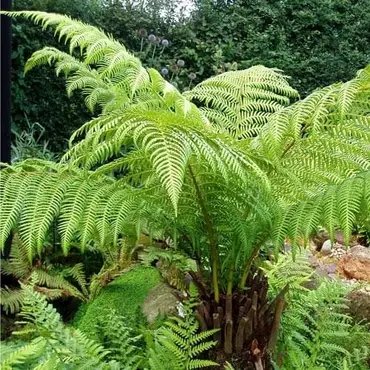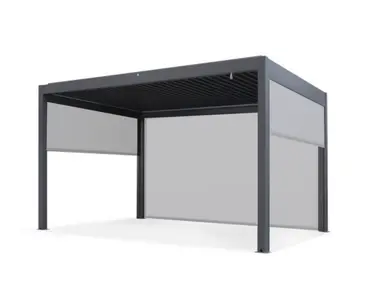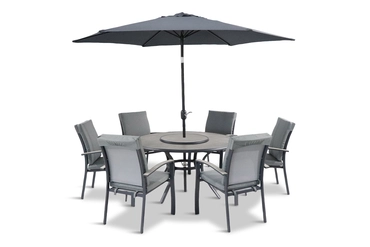
Congratulations. A tree fern is a most rewarding plant. Observing the fronds as they emerge, peak and mature is fascinating. If you are lucky, your fern might produce spores in future years! The more you observe your plant, the better you will be able to nurture it and it should bring you decades of happiness. Here is a list of the common questions I am asked about caring for the Dicksonia Antarctica tree fern. This fern is the hardest and best tree fern for the Irish climate. The other tree ferns I sell are less hardy and require more TLC and protection to ensure their survival through cold winters.
Planting
Aspect: Your tree fern is happiest in a sheltered area, out of the worst of the winds.
Light: They grow strongest in a position with good light, but like most ferns can tolerate a position with low light levels. Ideally, try to ensure your tree ferns get a few hours of sunlight where it is planted.
Soil: Your tree fern (and most ferns) thrive and root best in acidic soil – ericaceous compost, and roughly milled peat will have your plant very happy. I add around 20% of horticultural grit to the peat medium, to allow for adequate drainage and to stop the medium ‘caking’ i.e. becoming encrusted on the surface, which will stop rainwater permeating the soil to water the roots.
How to plant my tree fern?
They are often sold as trunks without fronds. Remember healthy fronds will be 3-4 times the length of the trunk. Leave space for the fronds. Remember a tree fern is not actually a tree, just tree-like in appearance. The planting depth of your trunk is not important to your fern. The depth that is required, is enough to stabilise your tree fern in its new home. E.G. - a 2-foot trunked tree fern, planted 4” deep in firm ground. It takes about 6 months for your tree fern to root in your garden. If your tree fern is sold in a pot and is firm in the pot, plant to the existing level of the compost in the pot
Watering Established tree ferns
When? How often? / How much?
From March to October once daytime temperatures are above 10 Celsius you cannot overwater your tree fern. Daily. During dry spells it is even more important to water your tree fern, this will also assist in a healthy crown of fronds for next season.
How to water your tree fern?
Through the crown, also water the fronds to keep them well hydrated, this will optimise the time your fronds look green and healthy. The slower you water your tree fern the better. A quick splash is almost ineffective. If using a hose, make sure it is on a slow setting, put in the crown and leave until you see the water permeate the trunk. You will know this is happening as your trunk will turn a rich dark brown colour. Having an irrigation dripper in the crown is probably the easiest and most effective way of keeping your tree fern adequately watered. Ensure irrigation is turned off during the winter months and cold spells. A new plant requires additional care with watering. If planted in warm spring or summer, water it copiously twice daily.
Feeding - How often?
Every 3-4 weeks during the growing season. I start in mid-March when the worst frosts are gone. Observe your local conditions. Use organic liquid seaweed only. Feed into the crown of your tree ferns; Liquid seaweed is a very safe way to feed your ferns. Seaweed is especially good for ferns but is good for all plants! Feeding your tree fern well will ensure a stronger plant to survive the winter and a big healthy head of new fronds in the following season.
Winter care
Protection: Ireland has a temperate climate and in general no protection is required for your tree fern Dicksonia antarctica. However, consideration needs to be given to factors such as your location, altitude, aspect, and wind exposure. Should the forecast predict temperatures lower than -4 Celsius ensure more robust protection? The crown and trunk should be well wrapped in fleece for the duration of the cold snap but removed once the temperatures climb above zero to allow air circulation of your fern. Covering your tree fern for long periods will stress your fern. It will dry out and produce smaller fronds each year. Cutting off fronds: We recommend leaving this job as late as possible, even trying to avoid it. Remember nature does it best and the fronds will naturally fall off your tree fern after a few years. If you must, tidy desiccated browned-off fronds on your specimen, and make sure to try and cut the stipe a few inches out from the trunk. Tight cutting back will lead to the narrowing of the trunk, and when this happens the succeeding fronds will naturally be smaller.
To Pot or Not to Pot? That is the question. For me, planting in the ground is the easy winner, it will support your fern without much maintenance once established. The potted fern needs daily watering as the warm air circulating the elevated fern will forever dry your fern. The best method is a dripper in the crown. Also, after 4-5 years, if still in the pot, it will be root-bound, you will need to remove it. Cut off around 30-40% of the root ball and replace it with fresh new peat and grit adding a slow-release fertiliser to the medium.
Danger Signs: Is your tree fern trunk getting narrower each year? This means it is too dry and is regressing. If it is not too late and you follow all the above care tips, you should slowly see your tree fern recover. Are your fronds getting progressively short each year? As above this is another sign of a lack of enough water, your tree fern is stressed and unhealthy. Follow the care tips and your tree fern fronds should start to grow bigger and stronger again. Remember this may take a few years.
Are your fronds a very light green colour? You are not feeding it and there isn’t enough food from nature to look after it. Start to feed as per the above instructions, and you should see a dramatic improvement the following season.
Damaged croziers in Springtime? If we have a mild winter and the fronds start to emerge early, a late frost may burn your unfurling croziers. This won’t kill your fern, but the fronds will not recover from this. To prevent this, a little bit of horticultural fleece is all that needs to be placed over the crown. My tree fern didn’t have any fronds last year! This is an extremely bad sign, and in almost all instances it is unfortunately dead. It is no harm to feed it, allow it one more year. They are resilient and still often surprise me.
How to check the health of my tree fern crown? Put your hand in the crown of your tree fern. The new croziers if healthy are in a circle in the crown, like lots of knuckles covered in brown hairs. Lightly scratch these knuckles and the hairs will easily remove. A soft green crozier there = healthy/hard brown = dead crozier. The existing fronds on your tree fern may remain green for a long while, but if the crown has dead croziers, your tree fern is dying.











